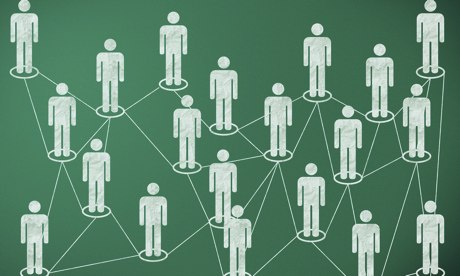To a certain extent audiences are empowered by these
developments due to the fact that new/digital media has been accessed greatly
by millions of people around the globe. Due to this people are able to have
access to greater variety of views and values, and decide their opinions by
looking at not one but several details. For example, the latest event of the
missing Malaysian Plane has been going on for a long time and majority of the
people are clueless. But when they want to be updated they look at the internet
straight away, however they can make their minds up to what they’ll believe.
For example, one site says the aliens have taken the plane, another says the
pilot has done this on purpose and others saying it’s in the middle of the
ocean near Australia. Look at different pages people have the option from
looking at the variety of news and making up their views and values based on
the diverse news pages they’ve identified.
As a result, audiences globally are able to access more
texts and web.20 is continuing to grow. Web 2.0 allows audiences to become
producers of the media texts. As a result of audiences being able to produce
several media texts, they’re able to promote their own views and values. There
are several of types of ways audiences do so such as creating their own blogs.
An example of this is, Media Mcguffin where we are able to blog our work and become
producers of our own media text. This supports Pluralism, as this is a society
of competing groups and interests; none of them are predominant which means to
present as the strongest elements. Therefore to a certain extent this goes for
new/digital media. Audiences have been empowered by the capability to challenge
organisations and get the truth out of circumstances where it wouldn’t
necessarily been known to the public. Which Briggs and Burke state “The most
important medium of the twentieth century”. A fine example of this is the ‘Arab
Spring’ which was the revolutionary of protests, riots and civil wars in the
Arab. This is where North African countries
fought to show the world how bad their governments where.
Media organisations are seen as enjoying an important degree
of autonomy from the state, political parties and institutionalized pressure
groups. Control of the media is in the hands of autonomous managerial elite who
allow a considerable degree of flexibility to media professionals. It’s seen
between media institutions and their audiences, as McQuail stated ‘the
relationship is generally entered into voluntarily and on apparently equal
terms.. and audience are seen as capable
of manipulating the meida in an
infinite variety of ways according to their prior needs and dispositions.’
This links with how audiences have been empowered by the capability to
challenge organisations and get the truth out of circumstances where it wouldn’t
be known to the public is Ian Tomlinson’s death. This was said to believe in the eyes of the
public that he died due to him collapsing and the first aiders not being able
to help him. But the truth was that he was actually hit by a police officer and
due to the hit he suffered a heart attack. The family have only been able to
seek justice due to UGC from the audience’s. Therefore, this favours greatly
McQuail’s statement as audiences are using the new/digital media to prior their
needs and dispositions.
In contrast, Marxists view capitalist society as being one
of class domination; the media are seen to promote hegemonic ideology and
ensure the dominance of certain classes. Audiences still produce texts, but
only with a certain view and the fact that they imitate media texts of the
traditional media. This supports Marxists view as it basically suggests that he
wants to emphasize the role of the mass media and keep the current power
structure in the society as they are and not change it. Therefore, the world has
to accept it as ‘common sense’ and ‘natural’.
As Marxists would argue user-generate comment creates an illusion that
we have a free opinion. But our opinion is influenced and manipulated through
varies of news content. Therefore, the audience are empowered by these
developments. Paerto’s law states that “a minority of media producers always
serve a majority of consumers”. This is evident as the social networking sites
such as- YouTube allows users to create their own channels. Youtube home page
consists of various channels with artists such as Beyonce, Justin Bieber and Rhianna. Artists
are only using these sites as a promotional vehicle. As, for example Justin Bieber
was releasing his album in two months. But before this he was letting out a
song every single week on YouTube to promote his album. Initially when the
songs were over people would be obliged to buy the whole album. Marxists view
was that the media have dumed down their output. As the views on youtube are
for traditional media, as audiences are able to catch up on television. ‘Burgess and Green’ say from the book of digital
media that there are 2 Youtubes 1, a space where thse two categories which are
traditional media and home video collide, but isn’t really coverage. The way
media texts are being consumed are changing but people are still consuming some
of the same traditional media without being aware.
To conclude, I strongly believe that there is a wide extent
that the developments in new/digital media have a greater access to varieties
of views and values. As new and digital media have provided loads of
opportunities for businesses, people and celebrities to promote their
act/field/video in social networking sites such as Facebook, Twitter and
MySpace. However, things such as citizen journalism is impacting the way
audiences have access as it’s challenging the professional journalists. As,
when an event occurs you need to be at the best time and right place in order
to witness and video it. That is then showed to millions through sites such as
YouTube. James Murdoch said “The expansion of state-sponsored journalism is a
threat to the plurality and independence of news provision”. Which also relates
to Marxists view. This allows audiences to innovate. As they’re able to publich
whatever the want through their device. Therefore media institutions have to
reconsider the information delivered to audiences with the aid of e-media
platform. Such as social networking sites as it can help update information and
audiences have varied sources of information they can choose from. Rather than
relying on traditional media forms such as the newspapers. As Rupert Murdoch
stated, “The world is changing and newspapers have to adapt.”




